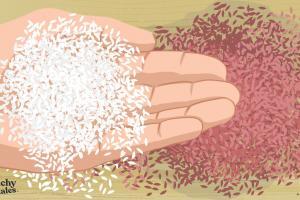Kitchen Memories: My Neapolitan Boyfriend And His Mother’s Ragu
Our heart is a sacred place: a drawer full of lovely memories. The Chef Valentina Harris has taken out a special recipe from hers to share with us. Find out why Neapolitan Ragu is so different from the Bolognese. And you? What’s your secret sauce? What’s your love recipe?
I remember certain things about Guido, my first boyfriend, incredibly clearly. I do remember realising he was not the love of my life after about two years, and being very certain and horribly blunt about it, and his response was to send me twelve beautiful, long-stemmed, red roses. I’ve always felt so guilty about that incredibly romantic and forgiving gesture.
I was very fond of his parents and often spent time with his mother in the kitchen. They were Neapolitan and shared with me an aspect of Italian culture that I had hitherto never really had any occasion to know or understand.
Of all the wonderful things I enjoyed eating during my time with Guido, the one dish I remember the best was the extraordinary, amazing and complicated ‘Ragù alla Napoletana‘, which differs so widely from the classic Bolognese version that it is impossible to confuse the two. One day I asked Guido’s mother if she would teach me to make it, and this resulted in spending about five hours in her kitchen. Her recipe has remained a much loved and adapted favourite ever since, and one that never fails to remind me of those 12 perfect red roses.
Neapolitan Ragu: a matter of time and love
This is what I was taught by Guido’s mother, taken from my notes scribbled in her kitchen 45 years ago:
Neapolitan Ragu is used to dress pasta, just like the Bolognese version, but this one is completely different and is much more difficult to prepare. You need patience and technique to do this right. Eduardo de Filippo, Naples’ greatest poet, has written an ode to this masterpiece. There are countless versions, but some processes and ingredients are common to them all.
The meat is not minced but cut into a piece from 500 g to a kilo depending on the cut. This is sliced like a large steak, then lined with lots of ingredients, then rolled and tied. You must use cheap and flavoursome cuts of meat that require long, slow, cooking times. Traditionally, the cooking fat would be dripping or lard, although olive oil is often used instead.
The onion, the only other vegetable used apart from the tomatoes, needs to cook down really well at the start of the process, it needs to become brown and luscious. The pan must be thoroughly deglazed with plenty of wine so as to distribute the flavours through the whole of the sauce.
The cooking time varies from 4 to 6 hours, but never less than 4 hours, or the onions and the meat will not cook thoroughly.
RECIPE
Serves 4 to 6
- 250 g beef chuck or skirt steak
- 10 slices chilli flavoured salami 500 g/1 lb 2 oz red onions
- 2 tbsp pine nuts
- 2 tbsp candied orange peel, chopped
- 3 tbsp sultanas, soaked in warm water for 10 minutes, then drained and dried
- ¼ tsp freshly grated nutmeg
- 2 tbsp freshly chopped flat-leaf parsley
- 20 g lard
- 3 tbsp olive oil
- 150 g pork neck fillet
- 100g pork ribs
- 500 g canned tomatoes
- 455 ml red or white wine
- Sea salt and freshly milled black pepper
Trim your beef and shape it into one large manageable sheet or steak. Place it flat on a chopping board, lay the slices of salami all over it to cover, then scatter over the pine nuts, candied peel, sultanas, parsley and sprinkle with the nutmeg. Season with salt and pepper and roll it up on itself, then tie it closed with some cook’s string.
Heat the lard and oil together in a large, heavy, metal or terracotta pot, and then seal the rolled beef steak and all the pork until well browned. Add about half the wine and let it evaporate slightly and thoroughly de-glaze the pan. Temporarily remove the meat.
Add all the onions and stir them thoroughly, simmering gently until they have browned and become sticky and soft. This should take about 20 minutes.
Add the rest of the wine, evaporate for one or two minutes, then add the canned tomatoes and return the meat to the pot. Allow simmering for about 2 hours, until the pork is falling apart. Remove the cooked pork and continue the cooking process for another 2 to 4 hours, or until the beef is also melting. Return the pork to the pot, and heat through for about 20 minutes. Take off the heat. Remove the steak roll and discard the string. Slice the beef roughly and return it to the pot.
Serve the ragu with a big chunky pasta shape such as Tortiglioni, Ziti or Paccheri, offering freshly grated Parmesan or Pecorino Romano at the table.




